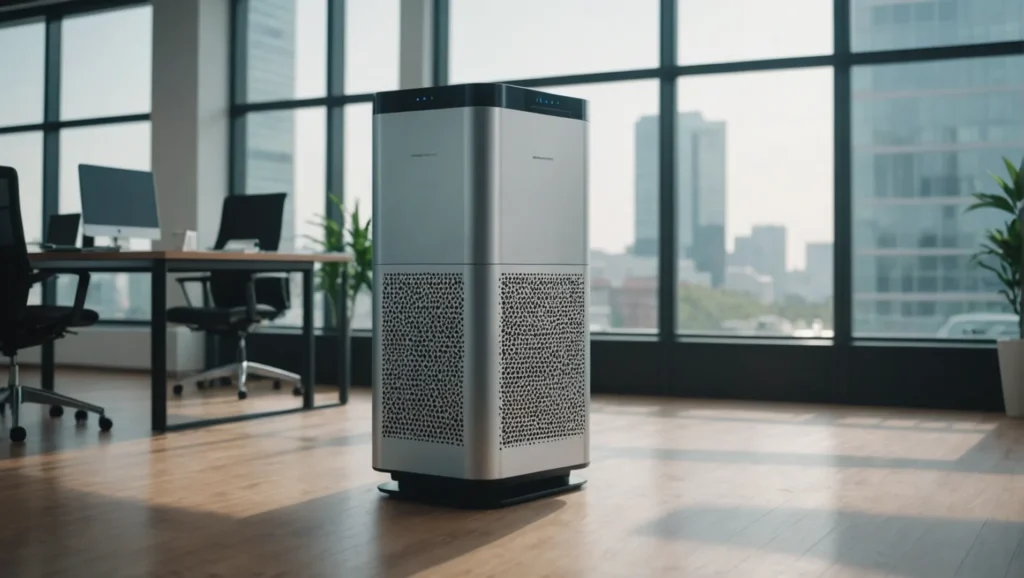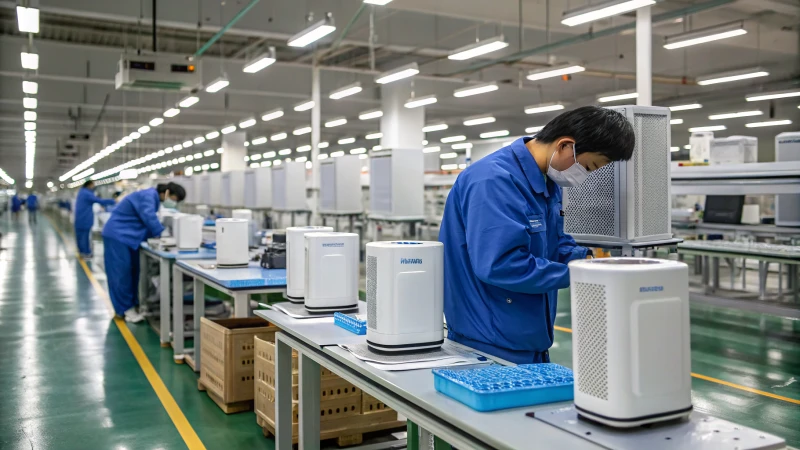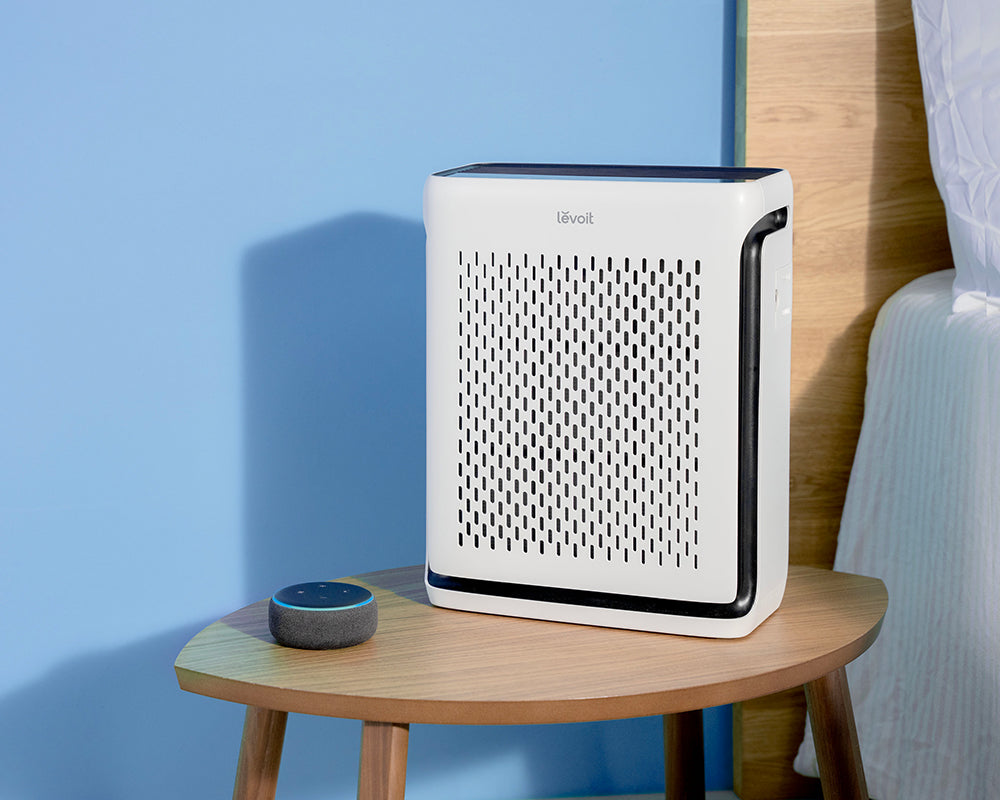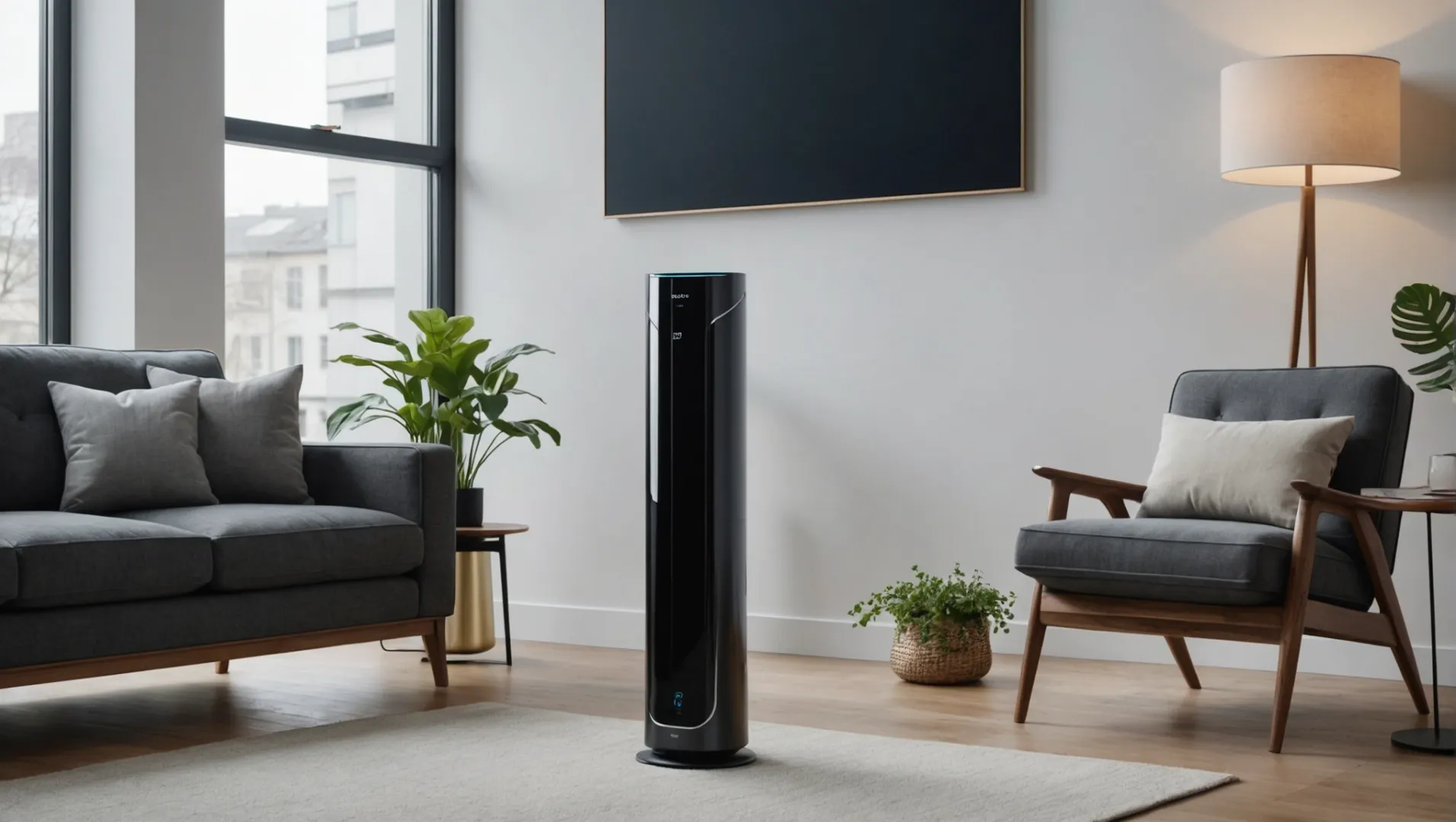
Stellen Sie sich vor, Sie betreten Ihr Haus und spüren sofort ein Gefühl der Frische. Das ist das Wunder IoT und AI in die Luftreiniger einführen!
IoT und KI verbessern Luftreiniger, indem sie Echtzeitüberwachung, automatische Anpassungen auf der Grundlage von Luftqualitätsdaten und verbesserte Energieeffizienz ermöglichen. Diese Technologien gewährleisten eine optimale Luftqualität und sorgen für ein gesünderes und komfortableres Wohnumfeld.
Jeder weiß, was ein einfacher Luftreiniger bewirkt. IoT und KI verändern alles. Diese aufregenden Veränderungen bringen viele neue Funktionen mit sich. Moderne Luftreiniger arbeiten jetzt intelligenter als früher.
IoT-Luftreiniger bieten eine Echtzeit-Überwachung der Luftqualität.Wahr
Die IoT-Technologie ermöglicht eine ständige Überwachung und Datenerfassung für Luftreiniger.
Was sind die wichtigsten Funktionen, die durch IoT in Luftreinigern?
Entdecken Sie, wie IoT Verbindung wechselt die Luftreiniger und verbessert deren Leistung und Benutzerfreundlichkeit.
IoT-fähige Luftreiniger bieten Echtzeitüberwachung, Fernsteuerung, Energieoptimierung und Integration mit anderen Smart-Home-Systemen und sorgen so für bessere Luftqualität und mehr Komfort.
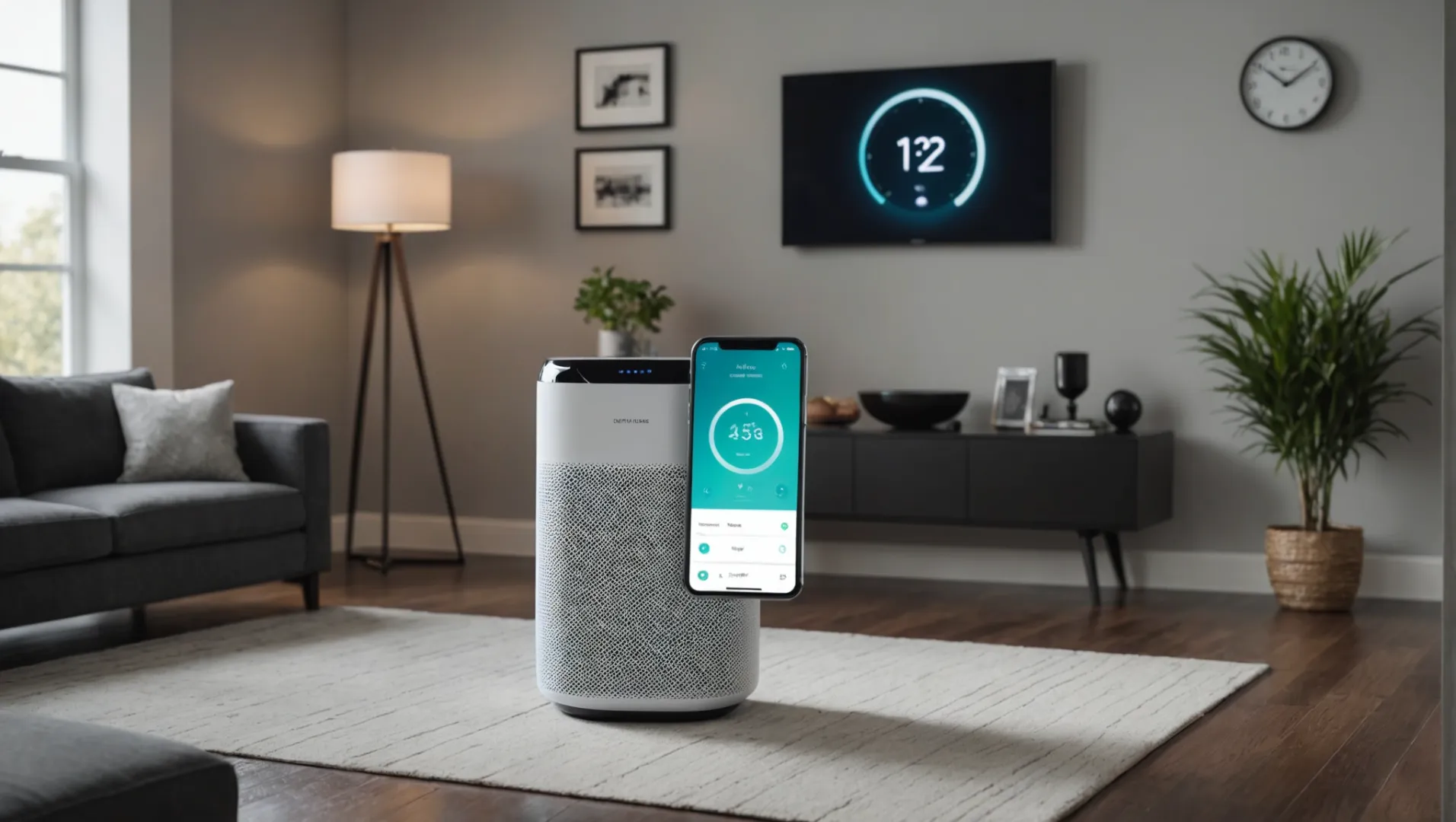
Kontinuierliche Überprüfung der Luftqualität und Sammlung von Informationen
IoT Technologie hilft den Luftreinigern, die Luftqualität ständig zu überwachen und über einen längeren Zeitraum Daten zu sammeln. Auf diese Weise untersuchen die Geräte Trends in der Luftqualität und passen sich bei Bedarf an. Die Menschen sehen detaillierte Berichte auf ihren Mobiltelefonen oder anderen Geräten, die ihnen Details über Schadstoffe in ihrer Umgebung zeigen.
Kontrolle aus der Ferne
Ein großer Vorteil von IoT ist die Steuerung von entfernten Orten aus. Die Menschen bedienen ihre Luftreiniger mit mobilen Apps oder Online-Plattformen von überall aus. Diese Möglichkeit ist nützlich, um die Einstellungen zu ändern, wenn man nicht zu Hause ist, oder um zu prüfen, ob die Luftqualität gut ist, bevor man ankommt. Sie ermöglicht auch automatische Änderungen auf der Grundlage persönlicher Zeitpläne oder Vorlieben.
Energie und Geld sparen
IoT Luftreiniger senken den Energieverbrauch durch intelligente Maßnahmen. Sie setzen Sensoren ein, um zu erkennen, wann eine Reinigung erforderlich ist, so dass sie nur bei Bedarf arbeiten, anstatt ununterbrochen zu laufen. Diese Funktion spart Energie, verlängert die Lebensdauer der Filter und senkt die Wartungskosten.
| Merkmal | Vorteile |
|---|---|
| Kontinuierliche Prüfung | Bietet ununterbrochene Updates zur Luftqualität und Verständnis |
| Fernsteuerung | Ermöglicht eine einfache Steuerung von jedem Ort aus |
| Energieeinsparung | Senkung des Energieverbrauchs und der Betriebskosten |
Einfache Integration in intelligente Heimsysteme
IoT Luftreiniger lassen sich nahtlos mit anderen intelligenten Geräten wie Thermostaten, Beleuchtung und Sprachsystemen verbinden. Diese Verknüpfung ermöglicht die vollständige Kontrolle über die häusliche Umgebung und macht es einfach, ideale Lebensbedingungen zu schaffen. Wenn beispielsweise die Luftverschmutzung zunimmt, sendet der Luftreiniger Nachrichten an das HVAC System, um die Belüftung nach Bedarf zu ändern.
Als IoT Mit der Weiterentwicklung der Technologie sind weitere kreative Funktionen in Luftreinigern zu erwarten, die unseren Komfort und unser Wohlbefinden verbessern.
IoT-Luftreiniger bieten eine Echtzeit-Überwachung der Luftqualität.Wahr
Die IoT-Technologie bietet nonstop Informationen zur Luftqualität.
Die Fernsteuerung von IoT-Luftreinigern ist nicht möglich.Falsch
Apps ermöglichen es den Nutzern, die Reinigungsgeräte von jedem Ort aus zu steuern.
Wie kann AI das Luftqualitätsmanagement verbessern?
KI verändert die Art und Weise, wie wir mit der Luftqualität umgehen, indem sie clevere und effektivere Optionen bietet.
KI verbessert das Luftqualitätsmanagement durch vorausschauende Analysen, Automatisierung und Datenverarbeitung in Echtzeit und verbessert so die Luftqualität in Innen- und Außenbereichen.

Prädiktive Analysen und Echtzeit-Überwachung
Künstliche Intelligenz (KI) nutzt prädiktive Analysen, um Veränderungen der Luftqualität vorherzusagen, bevor sie eintreten. Durch die Analyse von historischen und Echtzeitdaten können KI-Systeme Verschmutzungsspitzen oder andere Veränderungen der Luftqualität vorhersagen. Dies ermöglicht proaktive Maßnahmen, wie z. B. die Anpassung der Lüftungseinstellungen oder die Warnung der Bewohner, die Fenster zu schließen.
In intelligenten Städten beispielsweise sammeln Sensoren, die überall im Stadtgebiet angebracht sind, Daten über Schadstoffe. KI-Algorithmen verarbeiten diese Daten, um Muster zu erkennen und zukünftige Luftqualitätswerte vorherzusagen. Erfahren Sie mehr über die Überwachung der Luftqualität in Städten1 um zu verstehen, wie die Städte diese Technologien einsetzen.
Verbesserte Luftreinigungssysteme
KI-gestützte Luftreiniger passen ihren Betrieb automatisch an die erkannte Luftqualität an. Diese Geräte nutzen maschinelles Lernen, um sich an bestimmte Umgebungen und Nutzergewohnheiten anzupassen und so die Effizienz und Effektivität zu verbessern. So kann die KI beispielsweise die Filtergeschwindigkeit und den Stromverbrauch je nach Tageszeit oder Belegungsgrad optimieren.
Darüber hinaus kann KI mit anderen Smart-Home-Geräten integriert werden und so eine zusammenhängende Umgebung schaffen, die dynamisch auf veränderte Bedingungen reagiert. Wenn die KI beispielsweise eine hohe Feinstaubbelastung feststellt, kann sie auch das Licht dimmen oder den Thermostat anpassen, um den Komfort zu erhalten und gleichzeitig die Luft zu reinigen.
Maßgeschneiderte Lösungen für die Luftqualität
Die Integration von KI in das Luftqualitätsmanagement ermöglicht eine personalisierte Umweltkontrolle. KI-Systeme können die Einstellungen für die Luftreinigung an die individuellen gesundheitlichen Bedürfnisse, Vorlieben oder Aktivitäten anpassen. Diese Anpassung geht über die reine Luftreinigung hinaus; sie kann auch die Anpassung von Luftfeuchtigkeit, Temperatur, Geräuschpegel und sogar Lichtintensität umfassen.
Durch das Sammeln von Daten der Nutzer im Laufe der Zeit kann die KI personalisierte Einstellungen empfehlen, die das Wohlbefinden und den Komfort fördern. Erfahren Sie, wie personalisierte Luftreinigung funktioniert2 um einen tieferen Einblick in diese Fortschritte zu erhalten.
Integration mit HVAC Systeme
Die Rolle der künstlichen Intelligenz beim Luftqualitätsmanagement beschränkt sich nicht nur auf eigenständige Luftreiniger. Sie erstreckt sich auch auf HVAC Systeme in Gebäuden und Wohnungen. KI-Algorithmen optimieren die Leistung dieser Systeme und stellen sicher, dass sie effizient arbeiten und gleichzeitig eine hervorragende Luftqualität gewährleisten.
Durch die Integration mit HVAC Systemen ermöglicht KI einen umfassenderen Ansatz für das Management der Innenraumumgebung. Sie sorgt für eine optimale Luftqualität ohne Einbußen bei der Energieeffizienz oder dem Komfort. Sehen Sie, wie AI transformiert HVAC Systeme3 für weitere Einzelheiten zu diesen Neuerungen.
KI kann Veränderungen der Luftqualität vorhersagen, bevor sie eintreten.Wahr
AI untersucht vergangene und aktuelle Daten, um Veränderungen der Luftqualität vorherzusagen.
KI kann nicht mit HLK-Systemen für die Luftqualität integriert werden.Falsch
KI verbessert die Funktion von HLK-Anlagen und damit die Luftqualität in Innenräumen effektiv.
Warum ist die Echtzeitüberwachung für Luftreiniger wichtig?
Die Echtzeitüberwachung in Luftreinigern ermöglicht eine schnelle Reaktion auf veränderte Luftbedingungen und schützt das Wohlbefinden.
Die Echtzeitüberwachung liefert kontinuierliche Rückmeldungen über die Luftqualität, so dass die Luftreiniger die Einstellungen automatisch für eine optimale Leistung anpassen können. Diese Funktion gewährleistet eine gleichbleibende und sichere Atemumgebung und reagiert umgehend auf Schadstoffe und Allergene.
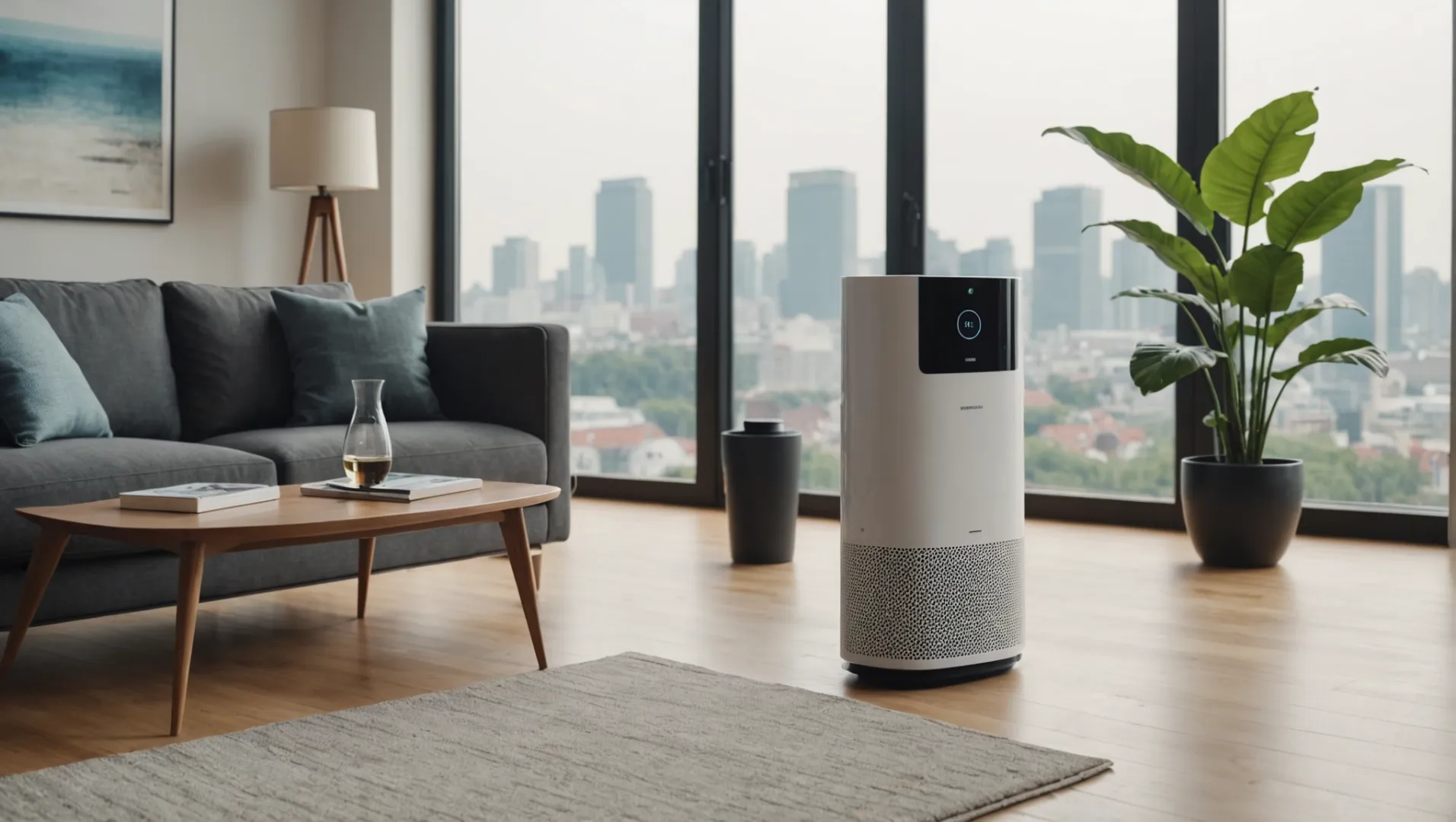
Die Rolle der unmittelbaren Beobachtung
Die Sofortbeobachtung verwandelt herkömmliche Luftreiniger in aktive Geräte, die auf Veränderungen in der Luft reagieren. Durch die regelmäßige Überprüfung der Luftqualität in Innenräumen stellen diese Geräte sicher, dass Schadstoffwerte4 auf einem sicheren Niveau gehalten werden und die Luft frisch bleibt. Dies ist besonders in städtischen Umgebungen von Vorteil, wo sich die Luftbedingungen aufgrund externer Verschmutzungsquellen schnell ändern können.
Verbesserung der Benutzerfreundlichkeit
Luftreiniger mit Echtzeit-Kontrollen lassen sich häufig mit Smartphones verbinden, so dass die Nutzer über die Luftqualität in ihrem Zuhause informiert werden. Diese Funktion informiert die Nutzer nicht nur, sondern ermöglicht es ihnen auch, das Gerät aus der Ferne zu steuern, was Komfort und Sicherheit bietet. Verschlechtert sich beispielsweise die Luftqualität aufgrund von Kochrauch, erhalten die Nutzer schnell eine Warnung und können reagieren, auch wenn sie nicht zu Hause sind.
Automatisierung und Energieeinsparung
Sofortige Kontrollen helfen den Luftreinigern, effizienter zu arbeiten. Sie passen ihre Aktivität an die aktuellen Luftqualitätsdaten an und verbrauchen mehr Energie, wenn die Verschmutzung steigt, und weniger, wenn die Luft frischer ist. Dies sorgt für eine sauberere Umwelt und spart gleichzeitig Strom, da das Gerät nicht unnötig überlastet wird.
| Merkmal | Nutzen Sie |
|---|---|
| Kontinuierliches Feedback | Hält die Luftqualität auf einem optimalen Niveau |
| Überwachung aus der Ferne | Bietet Verwaltung von jedem Standort aus |
| Selbstjustierungen | Unterstützt Energieeinsparungen |
Verbindung mit Smart Home Systemen
Als Teil von Smart-Home-Konfigurationen können Luftreiniger dank unmittelbarer Beobachtung mit anderen Geräten kommunizieren und so eine einheitliche Umgebung schaffen. Stellt ein Sensor beispielsweise einen hohen Kohlendioxidgehalt fest, kann er einen Ventilator aktivieren, um den Luftstrom zu erhöhen, oder einen intelligenten Klimaregler für mehr Komfort einstellen. Es wird erwartet, dass diese Integration mit Technologien wie den folgenden noch reibungsloser vonstatten gehen wird Materie5, so dass Geräte verschiedener Marken problemlos zusammenarbeiten können.
Für die Zukunft sind sogar noch schärfere Echtzeit-Beobachtungsmöglichkeiten denkbar, mit intelligenten Systemen, die die Luftreinigung auf der Grundlage persönlicher Vorlieben und gesundheitlicher Bedürfnisse anpassen. In dem Maße, wie sich diese Technologien verbessern, wird die Rolle der unmittelbaren Beobachtung bei der Sicherstellung von Effektivität und Wohlbefinden wahrscheinlich zunehmen.
Die Echtzeitüberwachung passt die Luftreiniger automatisch an.Wahr
Dank der Echtzeitbeobachtung können die Luftreiniger ihre Einstellungen je nach Luftqualität anpassen.
Luftreiniger mit Echtzeitüberwachung sparen Energie.Wahr
Sie passen ihre Aktivitäten an die Luftqualität an und senken so den unnötigen Energieverbrauch.
Wie werden zukünftige Innovationen die Luftreiniger verändern?
Zukünftige Fortschritte in der Luftreinigungstechnologie versprechen, sich nahtlos in unsere Routine einzufügen und die Luft, die wir einatmen, umzugestalten.
Zukünftige Innovationen bei Luftreinigern werden sich auf die Integration mit Smart-Home-Systemen, KI-gesteuerte Personalisierung und unsichtbare Designs konzentrieren, die sich in die HVAC Systeme, die das Luftqualitätsmanagement verbessern.
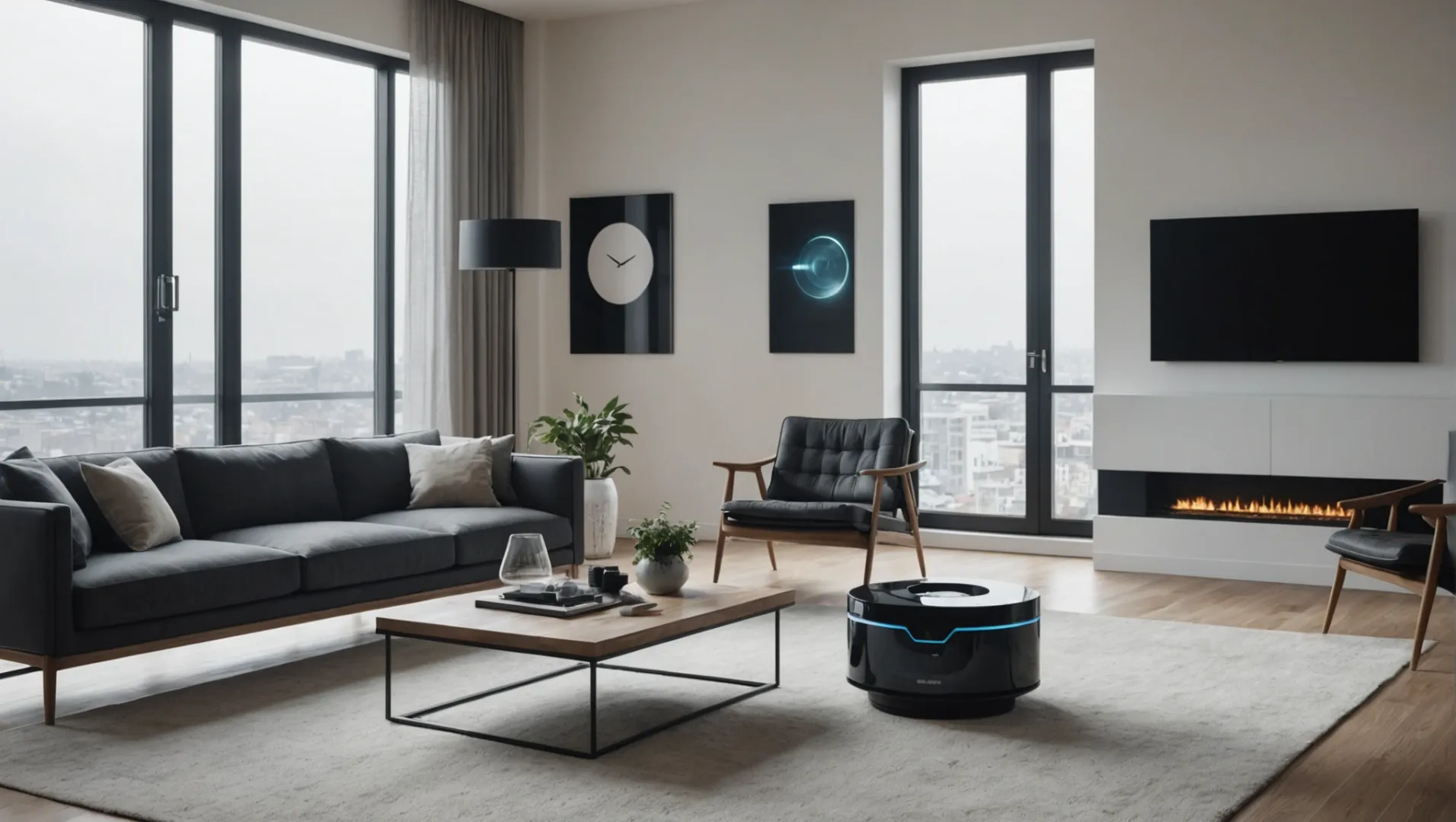
Integration mit Smart-Home-Systemen
Es wird erwartet, dass Luftreiniger in den nächsten Jahren mit Hilfe von Systemen wie Matter in intelligente Heimsysteme eingebunden werden. Dieses System ermöglicht eine nahtlose Kommunikation zwischen Geräten verschiedener Marken und stellt sicher, dass Ihr Luftreiniger mit Lampen, Thermostaten und Sicherheitsgeräten interagieren kann. So kann ein Luftreiniger beispielsweise seine Einstellungen automatisch an die von einem Thermostat ermittelten Temperatur- und Luftfeuchtigkeitswerte anpassen und so den Raumkomfort verbessern.
KI-gesteuerte Anpassung
Künstliche Intelligenz (KI) verspricht, ein neues Element der individuellen Anpassung der Luftreinigung zu schaffen. Durch Beobachtung der Handlungen und Vorlieben der Nutzer können KI-Systeme die Luftqualitätseinstellungen an die persönlichen Bedürfnisse anpassen. Dies beinhaltet die Anpassung von Luftfeuchtigkeit, Temperatur, Geräuschpegel, Lichtintensität und sogar Sauerstoffkonzentration, um eine persönliche Wohlfühlumgebung zu schaffen. Stellen Sie sich einen Luftreiniger vor, der nicht nur die Luft reinigt, sondern auch die optimale Stimmung für die Arbeit oder die Ruhe vorgibt.
Versteckte Luftreinigung
Künftige Luftreiniger könnten nicht mehr als eigenständige Geräte, sondern als integrierte Bestandteile von HVAC Systeme und Gebäudedesigns. Diese Änderungen zielen darauf ab, die Luftreinigung "versteckt" zu halten und für sauberere Luft zu sorgen, ohne Platz zu beanspruchen oder die Ästhetik des Raums zu stören. Da diese Systeme Teil der Bausubstanz werden, bieten sie eine kontinuierliche Kontrolle der Luftqualität in allen Bereichen.
Fortgeschrittenes Datenverständnis und -überwachung
Mit Fortschritten in der IoT und künstlicher Intelligenz könnten künftige Luftreiniger verbesserte Datenverarbeitungsfunktionen bieten. Echtzeit-Tracking und Warnmeldungen für eine frühzeitige Wartung könnten Standardfunktionen werden, die den Nutzern helfen, ihre Raumluftqualität proaktiv zu verwalten. Dazu können Benachrichtigungen gehören, wenn Filter gewechselt werden müssen oder wenn ungewöhnliche Luftqualitätsmuster erkannt werden.
Diese Neuerungen6 sind bereit, die Art und Weise, wie wir Luftreiniger wahrnehmen und nutzen, zu verändern und sie zu wichtigen Komponenten eines intelligenten, gesunden Zuhauses zu machen.
Luftreiniger werden in intelligente Heimsysteme integriert.Wahr
Künftige Luftreiniger könnten mit Smart-Home-Systemen wie Matter verbunden werden.
AI hat keinen Einfluss auf die Einstellungen des Luftreinigers.Falsch
Die KI passt die Luftreinigung wahrscheinlich an die Entscheidungen des Benutzers an.
Schlussfolgerung
IoT und KI verändern, wie die Luft sauber bleibt. Akzeptieren Sie diese Verbesserungen für einen sehr gesunden Lebensraum.
-
Entdecken Sie, wie Städte KI für die Überwachung der Luftqualität nutzen..: CALIOPE-Urban kombiniert die Technologie des CALIOPE-Regionalmodells, des BSC-Luftqualitätsvorhersagesystems, mit einem städtischen Modell, das die ... ↩
-
Verstehen Sie die Rolle der KI bei der Anpassung der Luftreinigung..: KI-gesteuerte Luftüberwachung | Schnelle Luftreinigung | Spielveränderndes, erweiterbares System | Geringer Wartungsaufwand | Duftmodus | IoT & kostenlose App. ↩
-
Erfahren Sie mehr über die Auswirkungen von KI auf die Effizienz von HLK-Systemen..: Die KI bringt bemerkenswerte Fortschritte für HLK-Systeme. Zu den Fortschritten gehören intelligente Datenanalyse, vorausschauende Wartung, Energieoptimierung, ... ↩
-
Erfahren Sie, wie die Überwachung der Luftverschmutzung in Echtzeit die Gesundheit und Sicherheit verbessert..: Die Überwachung der Luftqualität ist ein wichtiges Instrument zur Verbesserung der Luftqualität, zum Schutz der öffentlichen Gesundheit und zur Gewährleistung der Einhaltung von Vorschriften. ↩
-
Entdecken Sie, wie Matter Smart Home-Geräte nahtlos miteinander verbindet: Matter Casting ermöglicht es Ihnen, Inhalte von unterstützten Smartphone-Apps auf Fernseher oder Smart-Displays zu übertragen, wobei Amazon das einzige Unternehmen zu sein scheint, ... ↩
-
Entdecken Sie die neuesten Entwicklungen in der Luftreinigungstechnologie der nächsten Generation: Eine dieser Innovationen ist die UVGI-Luftreinigungstechnologie. UVGI steht für Ultraviolet Germicidal Irradiation und ist auch bekannt als ... ↩


